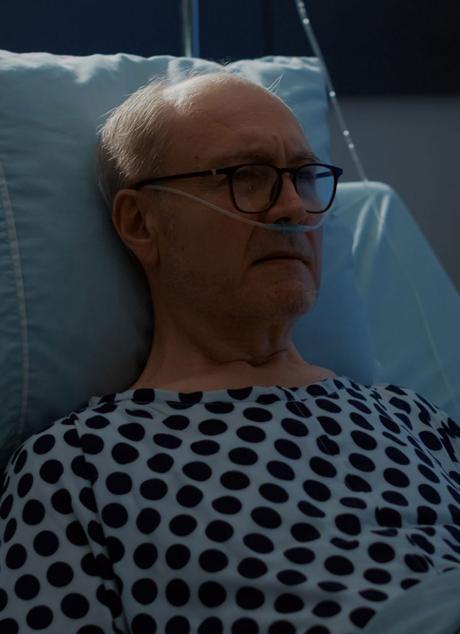Physiotherapy is one of the complementary treatments after various surgeries. This treatment will help the patient recover faster, and the surgery will be more effective. physiotherapy after surgery treatment by an experienced physiotherapist can also ensure a person’s mental health.
Different types of surgeries require their recovery period. A surgical procedure includes preoperative care, surgical procedure, and postoperative care. It is necessary to observe everything that helps the patient more comfort and safety in each of these stages and faster recovery. Postoperative physiotherapy is one of the main steps given special attention after most surgeries.
You may initially think that physiotherapy treatment is only suitable for people who perform surgeries related to orthopedic problems; if this is not the case. Today, different types of physiotherapy are performed with various methods and devices. Each of these treatments can help to improve the complications of multiple surgeries faster.
For example, women who have surgery to remove a cancerous tumour in the breast area will usually need physical therapy after surgery. Performing physiotherapy movements and exercises and improving flexibility and physical rehabilitation will also manage people’s mental and emotional conditions.
What is Physiotherapy after Orthopedic Surgery?
A person may undergo orthopedic surgery on various body areas during their lifetimes, such as the back, knees, ankles, elbows, wrists, thighs, hips, and the like. Contrary to popular belief, surgery is not the only cure in such cases; postoperative care should be pursued more seriously.
Postoperative physiotherapy is one of the main steps in the orthopedic surgery process. It is very important to pay attention to the patient’s specific conditions in setting the treatment plan. A specialist physiotherapist must first consider all of the patient’s medical conditions and adjust the treatment plan accordingly. For physiotherapy treatment after surgery, it may be necessary for the patient to use various specialized physiotherapy devices, various types of exercise devices, and the like.
Performing physiotherapy exercises after surgery can improve a person’s physical condition. On the other hand, in cases where people suffer from mental weakness after surgery, physiotherapy can restore vitality to the person. A skilled and experienced physiotherapist knows exactly what type of physiotherapy you should consider to have the greatest impact.
Who is Advised to Do Physiotherapy after Surgery and Rehabilitation?
There is a special type of physiotherapy treatment that is especially suitable for orthopedic patients. This type of physiotherapy is also called rehabilitation physiotherapy. Orthopedic surgeons prescribe several physiotherapy sessions after performing surgeries on the back, knees, hips, thighs, hands (arms and wrists), and the like. This has several major effects on the outcome of surgery:
- Greater surgical effectiveness
- Faster recovery of the patient and return to normal life
- Reduce pain from surgery
- Balancing in the body
Rehabilitation physiotherapy requires a specific type of exercise and treatment related to the skill and expertise of the physiotherapist. Therefore, seek out an experienced physiotherapist before seeking postoperative physiotherapy.

What Are the Benefits of Post-Surgery Physiotherapy?
Physiotherapy after surgery is based on increasing blood circulation, improving respiration, and raising the body’s oxygen level. This helps to relieve muscle cramps sooner and reduce pain and swelling. Special physiotherapy exercises after surgery are considered in such a way as to have the greatest impact on the speed of recovery; Of course, at the same time, the least pressure should be put on the person.
Doing different aerobic exercises or different physiotherapy tools will increase a person’s vitality and mental vitality. Undoubtedly, strengthening the mood and physical exercises will have a double effect on the effectiveness of various surgeries. In this way, the patient can soon return to his preoperative period and resume his daily activities.
What Are the Stages of Postoperative Physiotherapy?
Postoperative physiotherapy is mainly planned in three main stages. This healing process usually begins in the first days after surgery and continues until an acceptable recovery. Recovery time means when the body is relatively back to normal function. The three main stages of postoperative physiotherapy are:
- Initial recovery stage
- Power stage and range of motion
- Functional restoration stage
In the following, we will describe the different stages of physiotherapy.
Physiotherapy in the early Recovery Phase
Usually, in the first days after surgery, the person will experience swelling and pain in the treated area and, as a result, will feel uncomfortable and annoying. Doing physiotherapy after surgery helps the patient reduce the severity of pain and swelling. Improving the manipulated tissues increases the speed of pain relief and swelling.
In the initial recovery phase of physiotherapy after surgery, all movements and exercises aim to strengthen the muscles and walk. The main treatments done at this stage are the manual treatment of the joints to make them move more easily and heal more. A cane or walker is normal in such cases and is gradually discarded after starting treatment.
Physiotherapy in the Stage of Strength and Range of Motion
After completing the first phase of physiotherapy after surgery, the severity of pain and swelling in the treated area is reduced. In the second stage, the goal is for the joints and muscles to gain strength and improve a person’s mobility. The physiotherapist increases physical strength and strengthens the range of motion by training harder exercises.
Exercises taught to a person in the second stage of postoperative rehabilitation usually focus on creating balance and a deep sense. More intense manual therapy than the first stage is one of the treatments performed in this stage. Strengthening the body’s soft tissues in the phase of strength and range of motion will practically increase the intensity of mobility.

Physiotherapy in the Stage of Functional Recovery
After performing the previous two steps, it is time for the person to complete their treatment with additional exercises. In fact, at this stage, corrective exercises are more difficult and intense than before and practically prepare the person for daily life. Balancing and creating a strong sense of depth using challenging movements is one of the goals of this stage of post-surgery physiotherapy. The patient can move independently and maintain a good balance during the restoration of limb function.
The movements planned for the treatment of a person at this stage depend entirely on the physical and therapeutic condition of the patient. Therefore, each person should receive their treatment according to the expert opinion and the treatment plan of a reputable physiotherapist. The estimated time for each patient may even be quite different from other people.
One of the important points in setting up physiotherapy programs is the type of profession and activities that a person does in his daily life. For example, the schedule for an athlete will be very different from the schedule for a driver or housewife.
Postoperative Physiotherapy Is Recommended for which Surgeries?
Usually, all people experience muscle pain and weakness after various surgeries. On the other hand, the muscles’ level of mobility, flexibility, contraction, and expansion may change drastically. Therefore, postoperative rehabilitation and physiotherapy are recommended for almost all patients.
Surgery in various fields can also affect a person’s mental state. In many cases, it can even cause stress and anxiety. Feelings of extreme tiredness and frustration can also be considered complications of various surgeries.
A qualified and experienced physiotherapist can significantly improve the patient’s condition in all these cases. A physiotherapist can meet all of a person’s short-term and long-term health goals by setting a regular and accurate schedule tailored to the patient’s condition.
Postoperative physiotherapy can be applied to any area of the body. Some of the parts that require physiotherapy as a result of surgery are:
- Orthopedic surgeries
- Spine surgeries
- Neurosurgery
- Abdominal surgeries
- Chest surgeries
- Obstetric surgery
- Breast surgery to remove malignant tumours
- Urological surgery
- Disc surgery
- Shoulder surgery
- Maxillofacial Surgery
- Brain Surgery
- Cross ligament surgery

